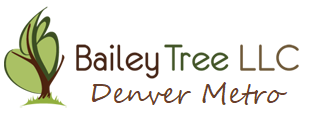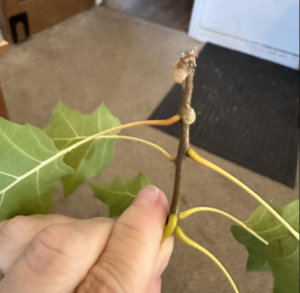Red Oak Scales Treatment in Denver
Have you recently discovered unwanted pests in your Red Oak trees? It’s a serious issue, but a solvable one with proper treatment. Contact Bailey Tree today to save your glorious Red Oaks. We have multiple ISA-certified arborists on staff, plus multiple additional college degrees, making us the most experienced experts in Denver for treating this particular issue. We’ll gladly give you a free estimate so that you can make an informed choice regarding your trees.
Seeing Red
Red Oak trees for the Front Range are not as popular as the Silver Maple nor Ash trees. However, once mature they are very regal, beautiful, and strong trees. Red Oaks are native to the Mid-western part of the United States. They turn a beautiful red in the fall. They do come with their own variety of insect and geological health issues. This page will discuss their main insect issue.
The two main insects that attack Red Oaks along the Front Range are Kermes Scale and Leucanium Scale. We will start with Kermes Scale.
Kermes Scale
Kermes Scale (pictured here) is a hard-shelled scale. Meaning that the “shell” is hard and not soft. The shell’s appearance resembles that of a tortoise shell. The adults (only females) reside on small twigs and branches, typically in clusters. They feed on the sap of these twigs and branches producing a sticky excrement named “Honeydew.” Honeydew is very sticky and sweet which attracts insects such as ants, wasps, and yellow jackets. These insects utilize Honeydew as a food source. Oftentimes ants will protect the scale insects to preserve their much-prized food source.
No surface below a Red Oak tree is safe from the droppings of Honeydew. On top of the Honeydew, Sooty Mold (black) will grow on any surface the Honeydew comes into contact with. It does become quite a nuisance because it will turn the tree’s twigs and branches, as well as anything it touches black with the mold. Additionally, the Honeydew does tend to leave a very sticky mess on cars, patio areas, and such.
One generation per year of Red Oak kermes scale is produced. The crawler stage (babies) overwinters on the twigs underneath the dead female. Once mating has occurred, eggs hatch in late August to Mid-September. The crawlers will make their way out to the leaves to feed for a short period of time before eventually positioning themselves in nooks and crannies near some of the bud attachments (petioles) for the winter. While in this position they continue to feed until winter. During this period, their feeding will cause small portions of leaves and twigs to prematurely fall from the tree. Not all portions damaged will fall off during this time, some will fall off during the spring.
This feeding damage is oftentimes quite alarming to clients. And over a period of years of feeding damage it can cause small twig and branch dieback, as well as lead to overall reduced health for the tree due to lower photosynthesis rates.
Years’ old methods of managing this insect are starting to be met with some insect resistance. But, at Bailey Tree, we pride ourselves on always being at the forefront with science-backed products to provide reliable service to our clients to manage insect such as scales on Red Oaks. It may take us 2 to 3 years of consecutive treatments, but we will achieve management.
Leucanium Scale
A second pest of Red Oaks is Leucanium Scale. This scale insect has a different lifecycle than Kermes scale and number of offspring produced. Eggs are laid in May to June and hatch in June as crawlers migrating to the leaves for initial feeding on the underside of leaves along the midvein. Eventually they make their way to smaller branches and twigs where they will remain for the rest of their one-year lifecycle and continue to feed. Intense feeding on the tree sap reduces plant vigor over time. It leads to premature defoliation, stunted growth, chlorosis, twig death and dieback.
Bailey Trees has many tools in our toolbox to provide red oaks with the correct management tools for these insects to maintain the overall health of your beautiful Red Oak. We also do recommend winter watering and deep root fertilization.
Please contact us today to request your free estimate!

